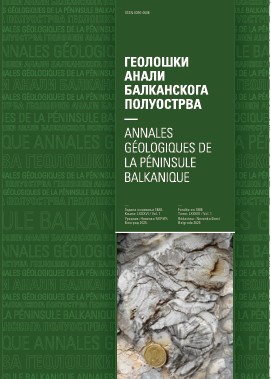A new approach to the definition of design criteria for radial collector wells in anoxic settings
Abstract
The outcomes of a study on groundwater flow from a river to a radial collector well are presented in the paper. The considered well, RB-16, is part of a groundwater source that provides water supply to Belgrade (Serbia). The source relies on the alluvial aquifer of the Sava River. The groundwater is mildly anoxic (Eh ~ 125 mV, Fe2+ = 0.46 mg/L, NO3 ~ 0.24 mgN/L, O2 ~ 0.1 mg/L). The paper is specific in the sense that it presents a novel approach to the definition of water well susceptibility to iron incrustation in an anoxic alluvial setting. Maximum permissible screen entrance velocities, as well as the structural characteristics of the horizontal screens and the radial collector well itself, are determined based on correlations established between the rate of well incrustation, redox potential, iron concentration in groundwater, and screen entrance velocities. One of the criteria is that the hydraulic resistances, caused by the precipitation of iron on the horizontal screens, are being lower than specified. The correlations between maximum permissible screen entrance velocities (the velocities that still allow a lower-than-specified increase in local hydraulic resistances at the entrance to the screens) and biochemical indicators (Eh, Fe2+) were taken from previous papers by the same authors and their associates. Original software was used for hydraulic analysis of the potential capacity of the location of well RB-16. The software supports 3D analysis, including boundary conditions, and was adapted for this particular purpose.
Copyright (c) 2018 Geološki anali Balkanskoga poluostrva

This work is licensed under a Creative Commons Attribution 4.0 International License.










